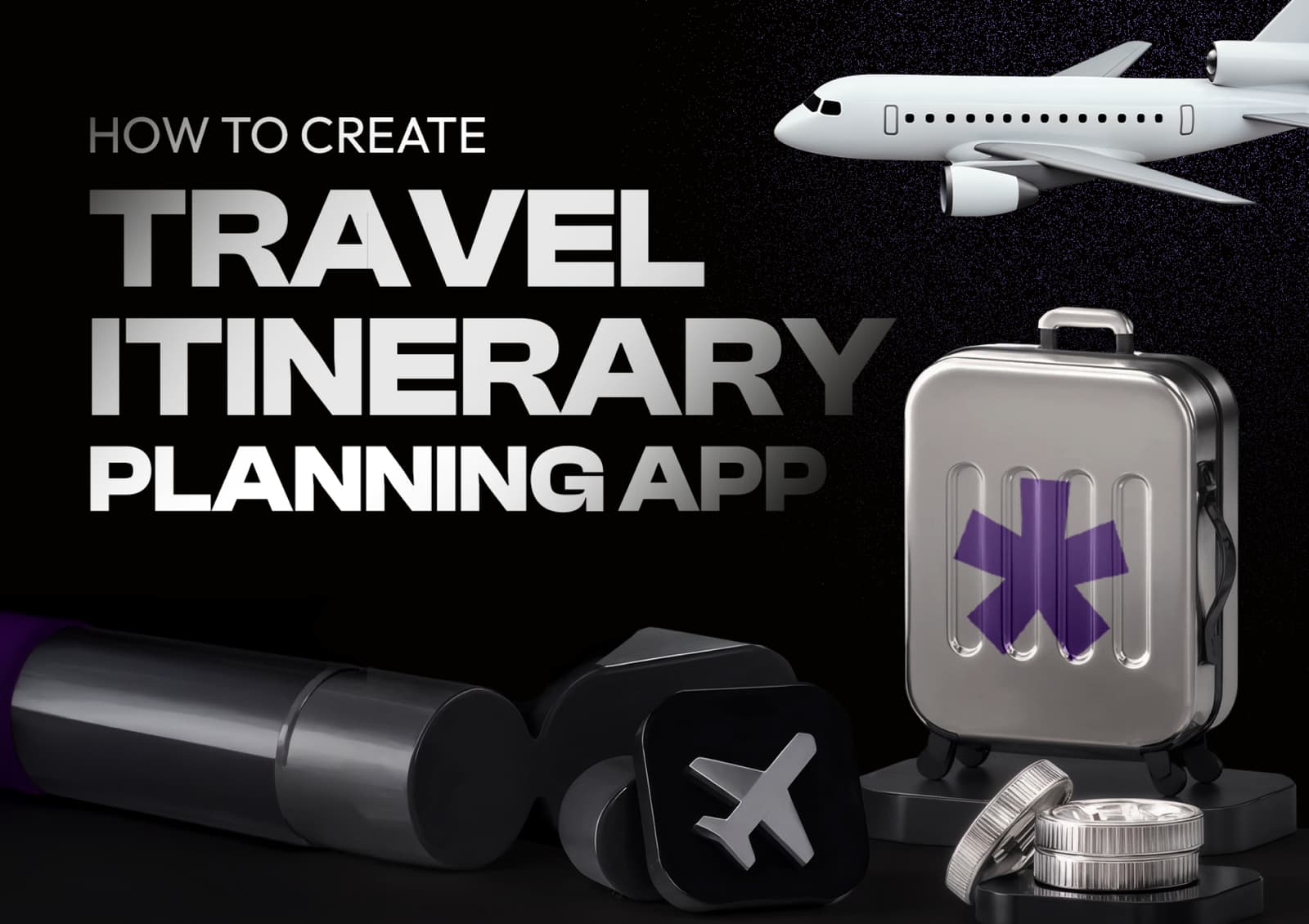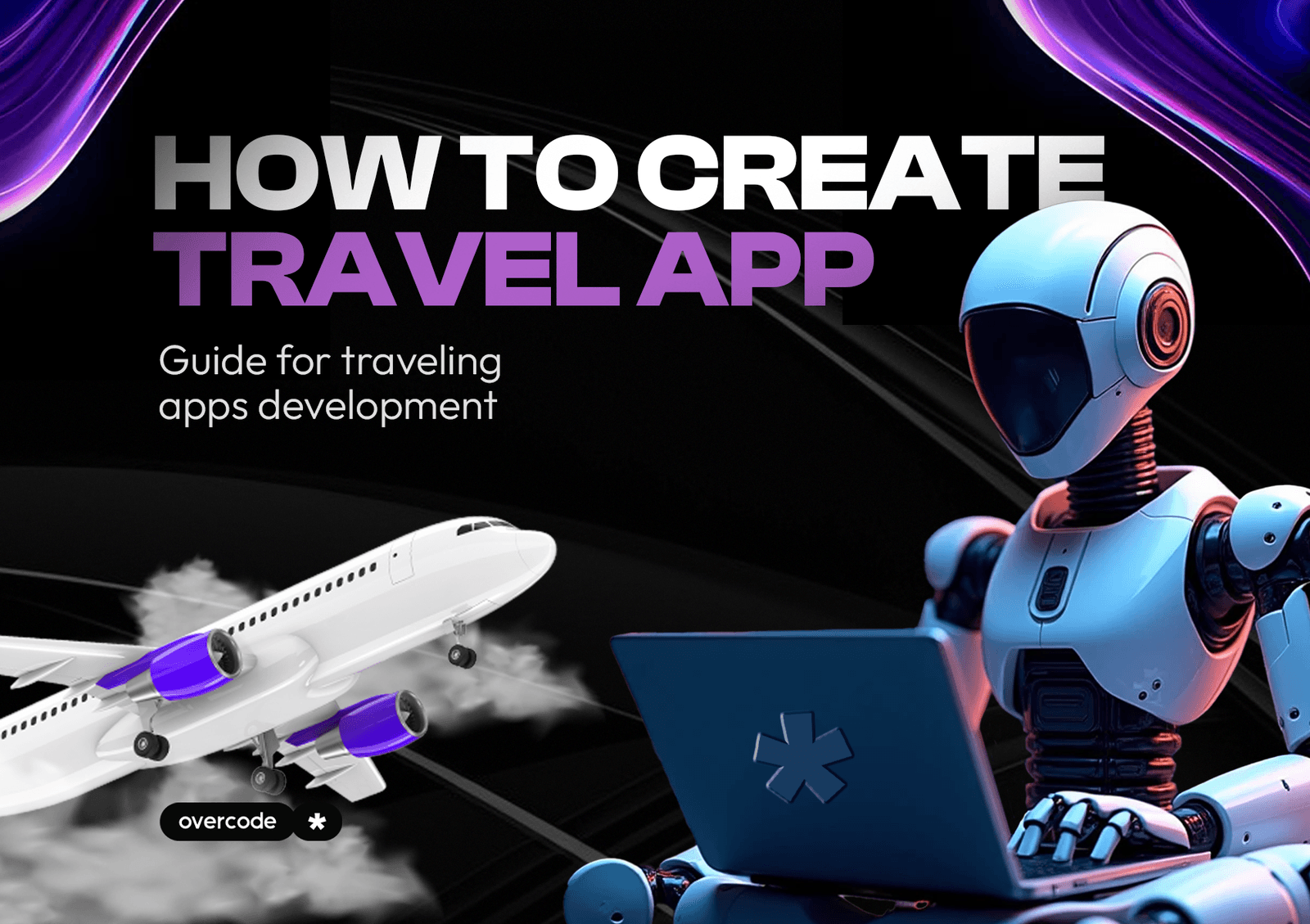How to Create a Travel Itinerary App That Travelers Keep Using Trip After Trip
After one of the sharpest declines in recent history (a 49.1% drop in global GDP), the travel industry is racing upward with renewed momentum. Since the last pandemic restrictions were lifted, holiday itinerary app development gains momentum while travelers plan longer trips, spend more and blend work with leisure like never before.
Have look at the numbers:
40% of travelers say they’re upping their budgets because travel “means more” post-pandemic.
Travel and entertainment now take up nearly 20% of global consumer spending.
U.S. travel spending jumped 6% year over year, even after inflation.
U.S. airport traffic rose 7% during the 2024-2025 holiday season compared to the year before.
This surge is driven by a shift in how people travel – more spontaneous, flexible, and tech-powered. Building a travel itinerary app in this context has profound market demand, providing people with a single place to manage it all: bookings, schedules, city tips, work calls, last-minute changes, and many more.
If you're a startup or dev team ready to build something travelers will actually use, now’s your moment for itinerary app development. In this guide, we’ll show you how to create an itinerary app that’s smart and scalable, from features people rely on to tech choices that won’t let you down.
Understanding the market & user needs of a travel itinerary app
A travel itinerary app helps people organize all the moving parts of their trip in one place – flights, hotels, activities, maps, weather, bookings, and various trip-related reminders. More sophisticated ones offer real-time syncing, collaborative planning, offline access, and AI-based trip suggestions.
Travel itinerary apps sit within the broader travel planning market, which is projected to reach $1.4 trillion by 2032. That includes itinerary tools built into larger ecosystems (like Booking.com or TripAdvisor) and standalone apps like Wanderlog, with huge user bases.

Some market insights to consider before you build an intelligent itinerary app or think over your product idea:
Travelers often mix business and leisure, “leisure” or “hybrid travel,” needing tools that handle shifting plans.
Travel probably has never been so top of mind, with 76% of younger generations more eager to travel than ever.
As travel spending shifts towards experiences, the global travel experiences market alone is now worth over $1 trillion and ripe for innovation.
Travelers still like to have a digital and analytics-informed travel journey and travel process, especially younger generations, but that doesn’t have to get in the way of human interaction (especially older generations).
Personalization matters: Travelers want suggestions tailored to their preferences, budget, and time – apps that "get them".
AI is quickly becoming a core part of the travel experience, from customer service and hotel chatbots to dynamic pricing and personalized suggestions. Many users are already booking trips based on GenAI-generated recommendations.
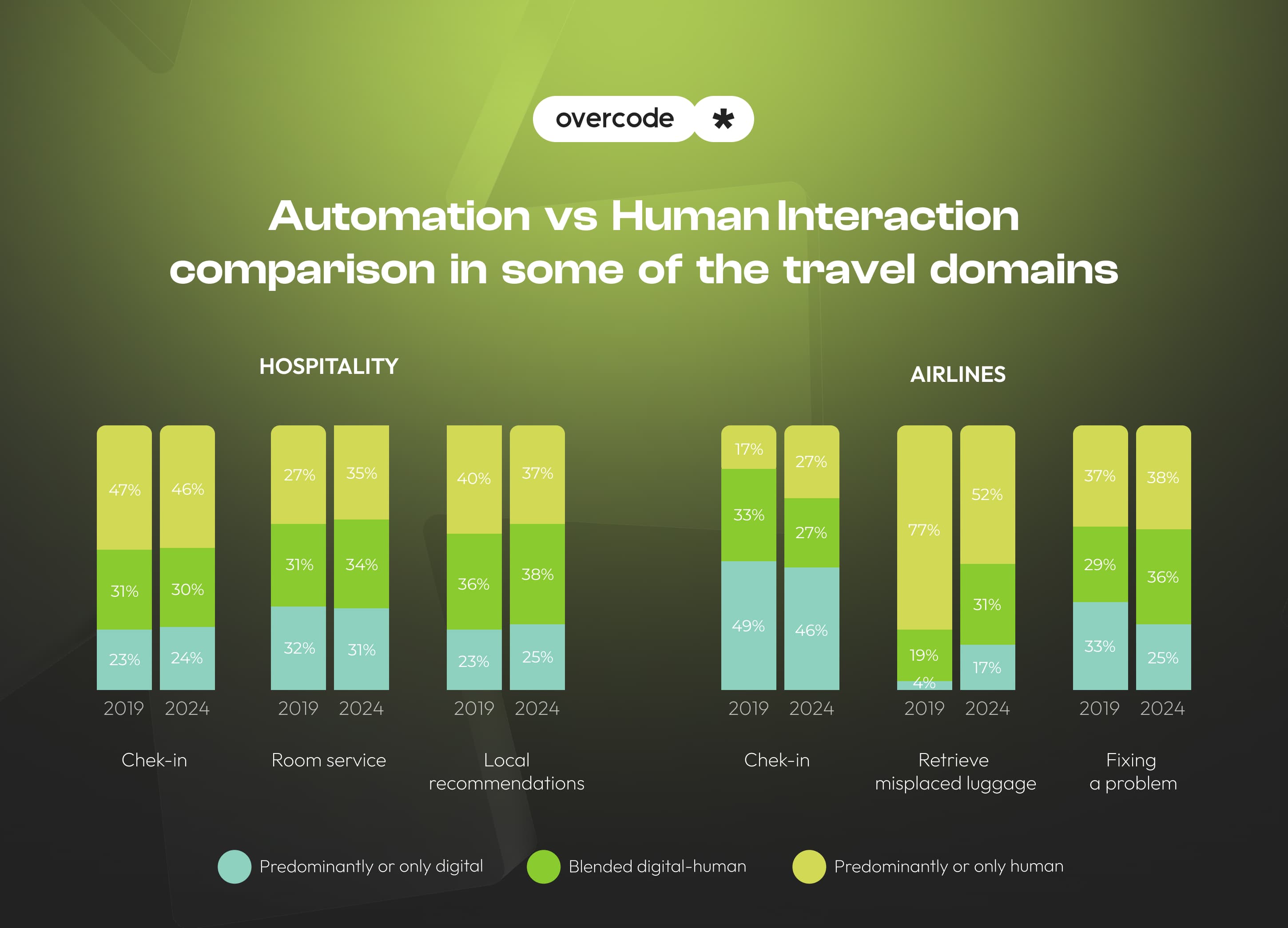
The travel industry is bubbling with initiatives, user expectations, and tech opportunities, offering travel tech companies a diverse and growing audience to serve.
Who needs an itinerary travel app?
Frequent travelers, digital nomads, business tourists, group trip organizers, solo adventurers, as well as travel agents benefit from an app for planning travel itineraries. As you see, pretty much anyone tired of juggling emails, screenshots, and last-minute WhatsApp messages benefits from a travel itinerary app. Here's how it serves different user groups:
Independent travelers. When one person is planning a tour itinerary and has to handle everything from transport to tours, a dedicated app can replace messy spreadsheets or scattered emails, reducing stress and oversight.
Group planners. Travel itinerary apps centralize all plans in one place so everyone stays on the same page. Many apps support shared access, so each traveler can view the latest itinerary, get updates, or add their own bookings. Some offer built-in polling tools to help the group decide on activities or flight times, while expense-splitting features simplify who owes what and whom.
Travel agencies and tour operators. Agencies that build custom trips need tools to keep everything accurate and client-friendly. Itinerary apps let them pull info from booking systems (like Amadeus or Sabre) and instantly share trip updates. Clients get a mobile-ready plan that updates in real time – no more back-and-forth PDFs or long email chains.
Business travelers. Business travel spending is surging toward a $1.5 trillion global market, so tools that streamline planning are in demand.

Let’s look at how trip itinerary app development tackles these travelers' needs with practical solutions.
Key pain points & solutions in travel itinerary app development
Planning a great trip is exciting but hard, so your goal should be to create an app that offers users relief. Below, you'll find the top user pains and working solutions that travel planning and itinerary management apps can address to stay relevant, useful, and loved.
Disorganized trip planning
Travelers juggle screenshots, messy email threads, and scattered notes just to piece together one itinerary. Essential details get lost, and the experience feels chaotic.
Solutions:
All-in-one trip hub. Flights, hotels, activities, reservations, and other travel-related information should live in one clean, centralized timeline.
Smart email parsing. Auto-import and organize bookings from Gmail, Outlook, or forwarded confirmation emails.
Drag-and-drop planning. Let users manually add, edit, or reorder plans on the fly, combining structured and spontaneous travel styles.
Searchable timeline. Add a simple way to search “hotel,” “check-in,” or “car rental” and jump straight to the info without scrolling endlessly.
Difficulty coordinating group travel
Group trips often spiral into chaos because of endless chats, missed updates, and the classic “Wait, which hotel did we book?” confusion. Without the right features, collaboration gets messy fast.
Solutions:
Shared itineraries. All travelers should be able to view, comment, or suggest changes like in a Google Doc, but for trips.
Integrated group chat. To keep discussions in one place, build a lightweight in-app messaging or connect through API to platforms like WhatsApp, Messenger, or Slack.
Smart expense splitting. Log who paid for what – meals, tickets, taxis – and the app instantly calculates who owes whom.
Built-in polls. Let the group vote on flights, restaurants, or other shared activities.
Real-time updates. Notify the group when plans shift, such as a restaurant reservation time or meeting point.
Offline access issues
Travelers often find themselves with spotty or costly internet access abroad. If the app requires constant connectivity, users might lose access to their itinerary, maps, or tickets, right when they need them most.
Solutions:
Offline mode. Save essential trip data directly to the device so it’s always available, even mid-flight or underground.
Smart, lightweight downloads. Use compressed formats and allow users to selectively sync specific trips, days, or documents to avoid unnecessary storage strain.
Pre-trip download prompts. Remind users to prep their trip before departure, which is especially useful for international travel or remote regions.
Background syncing with alerts. When the connection returns, auto-update the app and notify users of any last-minute changes like gate updates or delays.
Offline maps. Integrate with offline-ready tools to keep basic navigation available without relying on GPS or mobile data.
Smart caching. Automatically cache recently viewed content so users can access it later without even thinking about it.
Lack of personalization & smart recommendations
“Travelers are no longer content with a one-size-fits-all experience,” claims McKinsey. So, unfortunately, if your app offers generic content, users will scroll past or worse, uninstall it. Personalization is the key to keeping them engaged and coming back for more.
Solutions:
AI-powered suggestions. Recommend places to visit, dine, or relax based on time of day, user behavior, weather, and real-time location. A solo traveler in Tokyo might see late-night ramen spots, not family-friendly museums.
Smart profiles. Let users define and update their travel style, filling in as many details as they like.
Context-aware nudges. Suggest nearby spots during free time or highlight hidden gems that match their interests (think local jazz bars or vintage bookstores).
Feedback loops. Allow users to like, skip, or rate suggestions to refine recommendations over time.
Complex booking & reservation process
Booking travel involves many vendors and payment systems. Shuttling between airline sites, hotel or museum portals, and car rental agencies is tedious and error-prone.
Solutions:
Embedded booking engine. Instead of linking users out of your app, build native booking screens that display options, reviews, and prices from partners like Skyscanner or Expedia, all within the app’s flow.
Auto-fill traveler info. Store passport details, frequent flyer numbers, and preferences so users don’t have to retype them for each reservation. Make sure (!) this data is encrypted and stored securely.
Batch booking bundles. Let users reserve a hotel + airport transfer + sightseeing pass as a package with unified checkout. It's faster and easier for the user and offers upselling potential.
One-tap reservation flows. Pre-saved payment and traveler info (like in Uber or Google Pay) mean fewer clicks and faster conversion. It’s especially valuable for repeat users or those booking at the last minute or on the go.
Smart prompts & reminders. If a user books a flight but not a hotel, the app can suggest top-rated places nearby or pre-fill search filters based on flight arrival time and destination.
Information overload & cluttered UI
When the travel itinerary app throws everything, like maps, weather, bookings, and notes, you name it, at the user at once, it turns into noise. People lose track of what matters now and what can wait.
Solutions:
Focus-first design. Show users what’s relevant right now, like the next flight gate or hotel check-in, while keeping the rest a swipe away.
Customizable views. Let users switch between a daily timeline, map mode, or expense tracker so they always see the trip their way.
Collapsible cards & smart grouping. Group related items, like flight + hotel + transfer, and let users expand them only when needed.
Priority highlights. Use color, icons, or subtle animation to guide attention without overwhelming the eye.
Security & data privacy concerns
Travel apps handle sensitive details like passport scans, credit cards, and home addresses. One breach destroys user trust, worsening it with potential legal troubles.
Solutions:
End-to-end encryption. All data in messages, bookings, and payment info must be encrypted from device to server, even when shared between group travelers.
Privacy-first design. Let users choose what to store (or not). Offer clear permission requests, data download options, and one-click account deletion.
Secure autofill vault. Safely store passport numbers, loyalty IDs, and frequent traveler details with a biometric lock so they’re ready when needed but never exposed.
Compliance-ready backend. GDPR, CCPA, and other frameworks aren’t just checkboxes; they should be visible through user-facing controls and transparent policies.
Lack of monetization opportunities for app owners
Even the smartest travel planner won’t last without a revenue engine. Many apps stall when users love them but never need to pay.
Solutions:
Freemium model. Let users plan trips for free but charge for extras like offline access, smart AI suggestions, shared group editing, or real-time flight alerts.
Affiliate partnerships. Integrate with trusted platforms like hotels, tours, and travel insurance, and earn commission on bookings without adding cost for the user.
B2B packages. License your platform to travel agencies or concierge services with their branding and custom features as a white-label solution.
In-app upgrades. Sell personalized add-ons like itinerary templates, priority support, or even curated local guides tailored to user interests.
Now that your users' struggles and how to fix them, it’s time to add practical features that actually make it happen.
Key features of a travel itinerary app

Building a travel itinerary app that clicks with your audience means covering all the bases, from planning to on-the-go updates. Below are the core features itinerary app development won’t do without.
User accounts & preference modeling
Support sign-in via email, Apple, Google, or social logins. Profiles should store trip history, preferred travel styles, and destination interests. This data will fuel personalized experiences, from itinerary templates to AI suggestions across your travel planning and itinerary management app.
Dynamic itinerary builder
Give your users an option to create flexible, multi-day itineraries with drag-and-drop scheduling, calendar views, and support for accommodations, transport, dining, and activities. It can be done with modular trip blocks that users can add, edit, or share in real time.
If your app also targets travel agencies, corporate travel managers, or tour operators – those who often create similar trip structures for different clients – think of modular trip blocks. This feature lets them quickly generate itineraries using reusable templates.
AI-driven features
To build intelligent itinerary apps, AI is no longer a question. For example, integrating ChatGPT through API into your app enables conversational trip planning, offering the kind of personalized experience that modern users increasingly demand.
You can customize ChatGPT’s responses by feeding the model structured data, such as user preferences or past behavior within the conversation – user’s travel history, preferred destinations, or budget, for example.
Another application of AI can be NLP features that can parse booking emails and automatically create itineraries. AI-based route optimization tools will allow your users to adjust plans based on traffic, weather, or crowds.
Some apps use AI to predict price changes, provide real-time contextual alerts, and automatically create customized itineraries for agencies.
At Overcode, we developed Voyagi, a travel itinerary app where ChatGPT's integration allows users to create trips through natural conversations. This beautifully designed app combines the functionality of the travel guide, personal travel diary, and comprehensive map.
The app allows users to select destinations, dates, and activities; the system then combines GenAI suggestions with structured trip templates, making trip planning truly personal and well-organized. We have also added AI features to offerings such as cost predictions, smart hotel summaries, and contextual search.
Turn your idea into a reliable itinerary solution!
Work with experts who know travel tech and AI.
Offline access with cloud synchronization
Your app must be able to handle offline functionality by:
Making use of local storage such as SQLite, Room, or Core Data.
Caching mechanisms, such as an in-memory cache or file-based storage.
Storing essential data on the device – itineraries information, maps, important booking information, check-in instructions, etc.
When the device is reconnected to the internet, cloud synchronization should allow your holiday itinerary app to sync the changes:
Use background synchronization services, such as WorkManager on Android or BackgroundTasks on iOS.
Enable conflict resolution strategies to manage changes made offline and avoid data overwrites or loss.
Secure APIs to ensure data integrity between client and server.
Collaborative planning tools
Group trips remain one of the messiest parts of itinerary planning app UX. Enable real-time co-editing with WebSockets or Firestore listeners to sync itinerary changes across devices. Add structured comment threads per activity using nested data models and implement voting with lightweight state tracking (e.g., Firebase or Redis).
Think of role-based access (owner, editor, viewer, etc.) and payment splits via payment integrations (Stripe, PayPal, and others) for group trips.
Real-time alerts & push notifications
Use push notification services like Firebase Cloud Messaging to inform users about delays, gate changes, or check-in times. Combine them with in-app alerts through local notifications and real-time triggers from backend events. You can try implementing user preferences and throttling notifications to achieve high relevance, which will also keep your itinerary planning software from becoming spammy.
Interactive mapping & navigation
Integrate map SDKs such as Mapbox or Google Maps to create custom routes, nearby points of interest, and real-time overlays. Caching vector tiles and controlling layers can help you realize offline map integration. Use GPS + geofencing for contextual clues and route guidance.
Booking integrations
Connect to flight, hotel, and activity providers via APIs (Amadeus, Skyscanner, Booking.com, and similar) to allow for planning a travel itinerary or packaging offers. Use webhooks to synchronize updates or cancellations. Secure data exchange with OAuth and manage multiple providers with a modular service layer for easy scaling.
Technology stack for travel itinerary app development
Here's the selection of technologies that Overcode engineers have tested in real projects and can recommend for building smart, user-focused travel experiences.
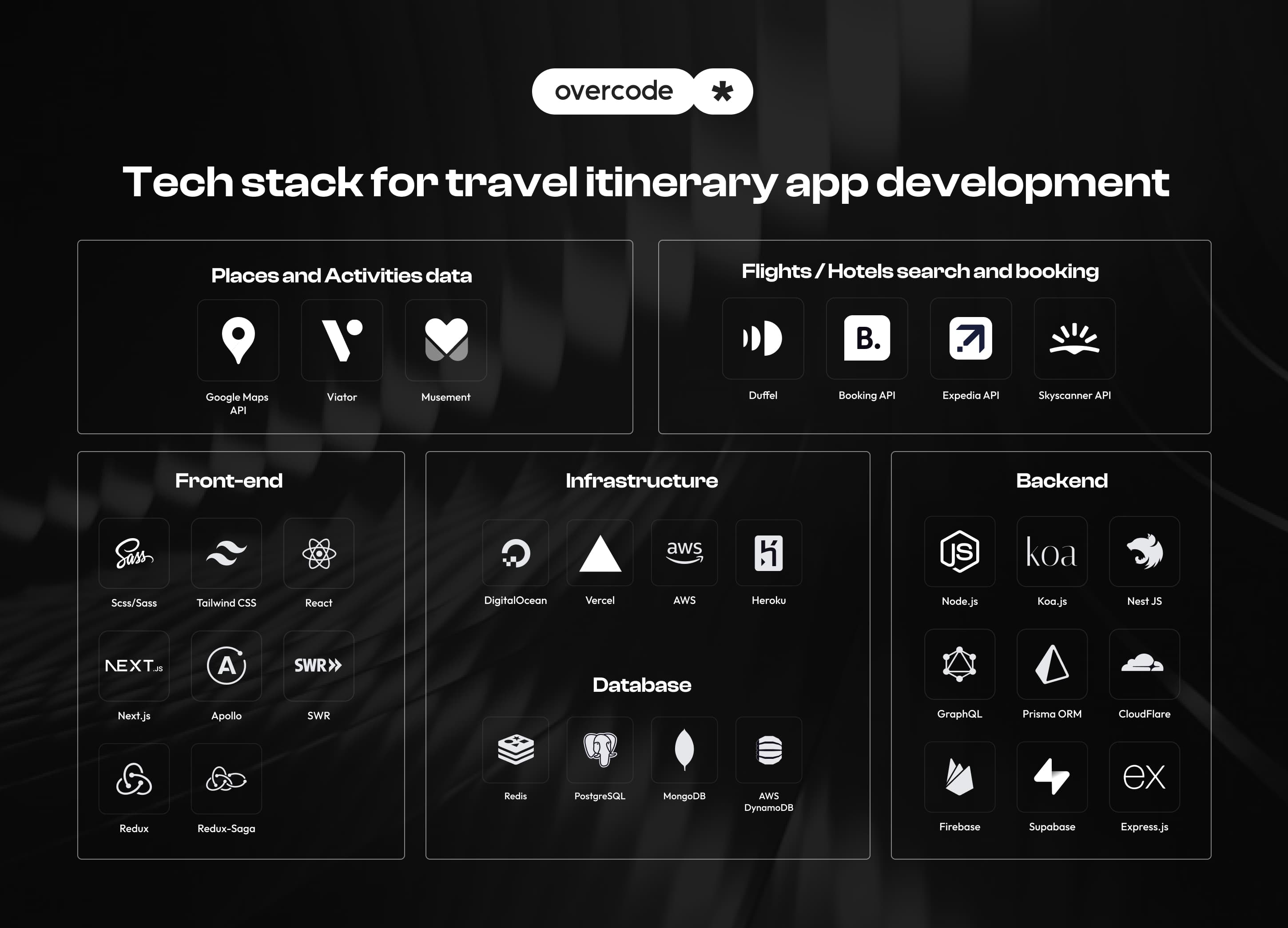
Frontend technologies
React.js, React Native, Flutter, Swift / Kotlin
Cross-platform frameworks like React Native and Flutter help build an itinerary app with a single codebase while preserving beautiful, consistent experiences across devices. The cross-platform approach is a top choice when you prioritize development speed and quick time-to-market.
These frameworks also work well for startups building MVPs of their itinerary planning software.
If native performance and rich OS-specific features are something your target audience or investors would appreciate more, Swift and Kotlin remain top picks for high-quality iOS and Android development, respectively.
Backend technologies
Node.js, Next.js, Python (Django/Flask), Supabase, AWS / GCP
Node.js will help your app handle real-time data like bookings, reservations, and itinerary changes. Python frameworks like Django or Flask fit projects that prioritize rapid development and strong data processing. Firebase offers real-time synchronization and serverless architecture, while AWS will let your itinerary planning app scale reliably as demand grows.
Database
PostgreSQL, MongoDB, Firebase Firestore
Structured data like user profiles and trip details work well with PostgreSQL. MongoDB suits apps that store more flexible or dynamic content. Think of user-generated content like reviews, photos, etc., in this context, as well as customizable trip details or rapidly changing booking information. Firestore is perfect for travel planning and itinerary management apps with real-time collaboration features, simplifying collaborative trip planning or on-the-go adjustments.
APIs & integrations
Google Places API helps users discover attractions, restaurants, places of interest, and so on around their destinations. It’s one of the most reliable mapping services, providing extensive features like geocoding, real-time navigation, and location tracking.
Mapbox is a solid alternative to Google Maps for custom visualizations. It offers custom styling in maps, making it a good choice for apps that want to stand out with specific routes or brand the experience.
Booking APIs like Expedia, Skyscanner, and Airbnb bring flight and accommodation data right into your itinerary planning software. They’re also the sources of real-time information on availability and pricing, supplemented with user reviews.
Weather APIs like OpenWeatherMap API, Weatherstack API, or Tomorrow.io API provide location-based forecasts necessary for packing and planning a tour itinerary accordingly or updating their plans depending on weather conditions.
Design considerations & User Experience (UX/UI)
Planning a trip itinerary is such an exciting process until clunky menus and confusing buttons ruin the mood. For individual travelers, UX should be about simplicity and joy, while business users strive to handle more clients with less hassle. Let’s look at the design choices that make the user experience smooth, engaging, and worth coming back to.
Simple and intuitive interface
Travelers don’t want to “figure out” your app. They want to quickly build and edit itineraries, check bookings, and add plans on the fly. Clear labels, drag-and-drop options, and minimal steps make a big difference.
Let’s take, for example, unmanaged business travel, where employees book everything without centralized oversight. A tech solution for this case could be integrating online booking platforms, expense management software, and travel data. Without an intuitive, user-friendly interface that seamlessly handles multiple functions, such a business idea won't succeed. No one would waste valuable, often billable, time on a system that lacks visibility and efficiency.
Visually appealing layouts
Use cards for each activity, timelines for daily schedules, and maps for location-based plans. A clean, easy-to-navigate view of the trip is what travelers do demand and appreciate.
For travel agents, for example, this layout approach simplifies trip planning. It makes it easier to create custom itineraries for clients, update bookings or activities on the go, and share all the details in one place.
Accessibility-first design
No matter who your target audience is, modern digital etiquette calls for designing apps that work for everyone regardless of ability, age, or tech comfort level. That’s where accessibility-first UI/UX design makes a difference.
Features like dark mode, text resizing, and keyboard navigation improve comfort for everyone. Some practical ideas for you:
Use clean layouts, high contrast, and scalable fonts. It helps anyone quickly scan plans in bright sunlight or after a long flight.
Design with VoiceOver and TalkBack in mind. Label every button properly, skip the decorative clutter, and structure screens so users with visual impairments or motor limitations can move through them without friction.
Make touch areas large enough for all users, which is particularly helpful for older travelers, people with limited dexterity, or anyone multitasking while planning a trip itinerary.
Allow drag-and-drop to rearrange plans, color-coded days, or icons that clearly show flights, hotels, and tours. These visual cues reduce cognitive load and work well for neurodivergent users or people unfamiliar with tech.
Trip itinerary app development process
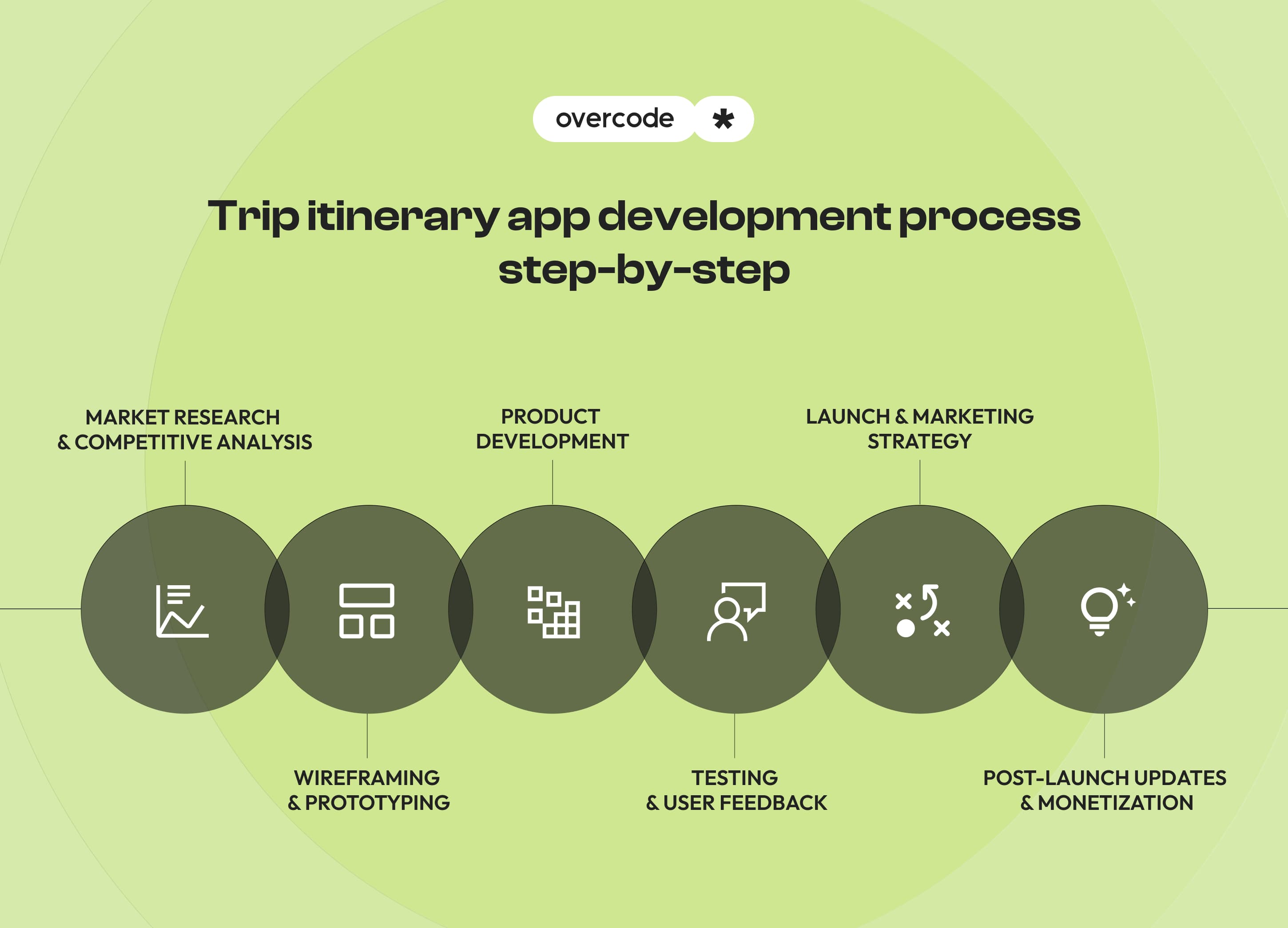
Let’s break it down step-by-step to show how you can organize your trip itinerary app development so it’s focused and effective.
1. Market research & competitive analysis
Look at what top apps like TripIt, Sygic Travel, and Roadtrippers do well and where users struggle. Scan their reviews, check ratings by region, and map out missing features or clunky UX. Use tools like AppMagic, SensorTower, or Similarweb to analyze downloads, feature usage, and market share.
Go data-first: look at Google Trends, Keyword Planner, or subreddit discussions to spot traveler needs. Run quick surveys to validate them.
From there, define your niche. It can be travel planning for remote workers, family group itineraries, or offline-first trips for adventurers; just let real user needs shape your core features.
You may already have customer data from past products or other legally acceptable (!) sources. So use AI and analytics to spot patterns, predict behavior, and tailor every touchpoint in real time. This is called hyper-segmentation and hyper-personalization, the approaches that allow users to gain a truly individual experience. See the picture below to grasp how it works.

2. Wireframing & prototyping
Of course, you may start with a piece of paper and a pencil to sketch out the experience you're offering your users. Still, tools like Figma or Adobe XD can really help you structure ideas before building a single screen. At this stage, map out how users will:
View their trip at a glance
Navigate between days and details
Access features like maps or sharing
Interact with key elements like dates, times, and bookings
Pay special attention to:
Trip overview visibility (dates, locations, status)
Easy access to daily plans
Clear time and location cues
Smooth editing of itinerary items
Offline accessibility indicators
Map integration points
3. Product development
When stepping into hypothetical yet unknown user territory, Minimum Viable Product (MVP) development is the safest bet. Build only the core features needed to deliver real value and test usability early.
From the list of software development methodologies, choose an Agile development approach with short iterative cycles like Scrum or Kanban. It will allow you to continuously refine the app based on real feedback, quickly fixing what doesn’t work and improving what does.
If you don’t have an in-house dev team yet, outsourcing software development is a smart move. Outsourcing gives you instant access to experienced talent, helps reduce development costs, shortens time-to-market, and lets you stay focused on product vision rather than team hiring or overhead. Just make sure your vendor has solid experience as a tech partner for startups.
4. Testing & user feedback
Ask real users to poke around your app early. Engage those who do fit your audience through targeted outreach or beta registrations. Tools such as UserTesting, Hotjar, or Lookback.io are a good choice for remote user testing.
Conduct usability tests to identify friction points, unit tests for code reliability, and performance tests to ensure your app works as expected under real-world conditions.
Beta testing should be conducted with a small, diverse user group, whose feedback should be collected through surveys, interviews, and in-app feedback tools (Instabug or Typeform, to mention some).
No less important is the practical part of the testing process: iterate quickly based on the knowledge gained. Fix bugs and polish the user experience.
5. Launch & marketing strategy
Successful trip itinerary app development should culminate in publishing it to the App Store and/or Google Play with the following specifics:
Apple demands enrollment in its Developer Program,
Google requires a one-time registration fee for a developer account.
Apple’s review process is considered stricter than that of Google.
The publishing process, in general, may include store-specific rules and metadata requirements, so check them thoroughly beforehand.
A strategy that can help you succeed with the launch is known as App Store Optimization (ASO). It may involve creating a meaningful title, writing a keyword-rich description, and adding high-quality screenshots or preview videos.
For web apps, launching means hosting on a reliable server or cloud platform so that visibility is not a question across various devices and browsers.
To make your app visible:
Create early marketing buzz.
Come up with countdowns, behind-the-scenes content, and travel tips. Choose social media platforms that are popular with your audience and promote your app there.
Partner with travel influencers.
Give early access or affiliate links; it'll drive more trust and traffic to your app.
During peak travel planning periods, you can also try advertising with Google, Meta, and similar platforms.
Don't forget to track performance with UTMs and in-app analytics.
6. Post-launch updates & monetization
Once the app is live, keep it breathing through updates, bug fixes, and adding new user-focused features. They may include curated travel content, smart suggestions, or seasonal recommendations. A steady update rhythm shows users the app is active and improving.
To add a revenue stream to your app, choose a monetization model that fits your audience and app value. Here’s a breakdown of common models and how they correlate within an app for itinerary planning in travel:
Monetization models for an itinerary planning app
| Model | Definition | Business application & value |
|---|---|---|
| Subscription model | Recurring payments (monthly/yearly) for premium features | Unlocks full itinerary syncing, offline mode, smart suggestions, or travel guides. |
| In-app purchases | Allow users to purchase additional functions or content in the app. | Sell access to premium itineraries, personalized recommendations, offline maps, guided tours, virtual reality experiences, etc. |
| Affiliate marketing | Earn commission by directing users to partner bookings | Integrate booking links for hotels, flights, tours (e.g., via Booking.com, Skyscanner). |
| Advertising & sponsorship | Display paid content from travel brands or services | Earn with sponsored placements (e.g. hotel chains, gear brands), native advertising, display ads, sponsored content, brand experiences, and similar. |
| Freemium model | Offer core features for free, charge for advanced ones | Let users try basic itinerary planning for free and add more sophisticated features such as advanced search, offline access, priority support, exclusive offers, and ad-free experiences for a fee. |
Many travel apps combine models to balance growth, loyalty, and profitability. Choose model(s) based on your audience's willingness to pay, app complexity, and long-term product goals.
Challenges of creating itinerary software & how to overcome them
Whether you're a developer, startup, or established travel brand, building a high-quality app for itinerary planning and getting it to market fast is a must. How difficult is that? It depends on your tech expertise or the tech partner you choose.
Either way, Overcode mapped out the main hurdles you may face during itinerary planner app development and how to avoid letting them slow you down.
| Challenge | Solution |
|---|---|
| Data privacy & security | Use encryption, comply with GDPR/CCPA, secure APIs, and store minimal data. |
| Real-time data integration | Integrate with travel APIs (e.g., Skyscanner, Booking.com) and handle failovers. |
| Offline access | Cache key data (e.g., maps, plans), use local storage, sync when online. |
| Complex UX for diverse users | Prioritize intuitive UI; test with families, solo travelers, groups, etc. |
| Cross-platform performance | Use frameworks like Flutter or React Native; test across devices early. |
| Monetization without disruption | Choose user-friendly models like freemium, in-app purchases, or subscriptions. |
| Scaling user base & traffic | Use scalable cloud infrastructure (e.g., AWS, GCP), and optimize backend. |
| Keeping content relevant | Use user behavior data and AI to personalize suggestions and updates. |
The travel industry is booming, and it’s magnificent. In a century marked by pandemics, conflicts, and tectonic social shifts, the human desire to explore the world remains constant. Travel planning and itinerary management apps are here to support that desire, helping people move, discover, and experience with ease.
Behind successful itinerary app development stand powerful technologies:
AI for personalized suggestions and smart scheduling.
Cross-platform frameworks like Flutter or React Native for faster development.
Cloud services for decent performance and scalability.
Secure APIs to integrate flights, hotels, experiences, and whatever a modern traveler needs in real time.
Whether you’ve decided to create itinerary software for solo travelers, travel agencies, or business tourists, it is definitely the right time to achieve ROI. And while you may face some challenges down the road, think data privacy, UX complexity, or scaling, each has a solution with the right tech partner.
Overcode builds AI-driven travel apps that keep users coming back, and we’re ready to share our experience with you.
From idea to travel app: let’s build it together
Our team will guide you from concept to market-ready product, taking care of design, development, integrations, and scalability so you can focus on growing your business.
